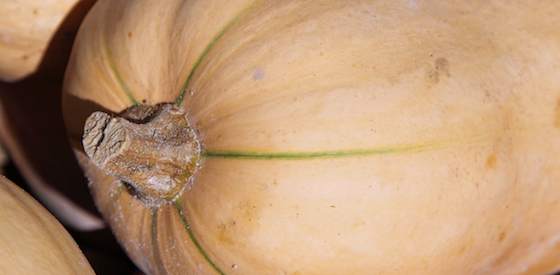- MENU
- HOME
- SEARCH
- WORLD
- MAIN
- AFRICA
- ASIA
- BALKANS
- EUROPE
- LATIN AMERICA
- MIDDLE EAST
- United Kingdom
- United States
- Argentina
- Australia
- Austria
- Benelux
- Brazil
- Canada
- China
- France
- Germany
- Greece
- Hungary
- India
- Indonesia
- Ireland
- Israel
- Italy
- Japan
- Korea
- Mexico
- New Zealand
- Pakistan
- Philippines
- Poland
- Russia
- South Africa
- Spain
- Taiwan
- Turkey
- USA
- BUSINESS
- WEALTH
- STOCKS
- TECH
- HEALTH
- LIFESTYLE
- ENTERTAINMENT
- SPORTS
- RSS
- iHaveNet.com: Recipes
Penelope Wall

Celebrate the season with this nutritious and flavorful winter squash recipe.
This Winter Squash & Kale Risotto With Pine Nuts is a nutrient-dense recipe. This recipe will help you enjoy the rich flavors and health benefits of seasonal squash.
Squash is one of the oldest cultivated crops in the western hemisphere, dating back to 8,000 B.C. Mexico. An important staple of nearly every Native American tribe, squash was part of the Iroquois' "three sisters" of plantings, along with maize and beans. Squash seeds were buried with the dead to nourish their journey in the afterlife, and also were believed to increase fertility. The earliest squash had sparse flesh and was bitter and unpalatable, and cultivated only for its seeds. As cultivation spread, better tasting varieties developed.
Winter squash are part of the Cucurbitaceae family, also known as the gourd family, along with melons, cucumbers and luffas (or loofah,) the spa sponge. Characterized by hard shells, hollow inner, seed-filled cavities, and sweet flesh, the many varieties include acorn, banana, turban, butternut, Hubbard, spaghetti, and Kabocha. Winter squash are harvested at a more mature age than their summer cousins. The hard shell lends longer storage capacity, and the vibrant yellow and orange flesh is richer in vitamins. Winter squash are an important source of carotenoids, a group of antioxidants that includes alpha and beta carotenes; just one cup provides more than double the daily requirement of vitamin A, important for eye health.
Carotenoids have received much attention for their anticancer potential. Beta carotene was found to inhibit the spreading and growth of leukemia cells, according to a study published in the May 18, 2011 Archives of Biochemistry and Biophysics. Higher levels of alpha carotene in the blood were linked with lower risk of death from all causes, including cardiovascular disease and cancer, according to an article in the March 28, 2011 issue of Archives of Internal Medicine. The study supports increased consumption of fruits and vegetables as a means of preventing premature death.
Slice into winter squash and the deeply colored flesh will brighten the gray of winter. Though available from August to March, they are at their best in October and November. The most flavorful squash will have a firm, smooth rind that allows most varieties to be stored for one week up to six months, if kept out of direct light and extreme temperatures. Once cut, store squash covered, in the refrigerator, for one to two days. Cooked winter squash, whether steamed or baked, needs little more than a dash of seasoning to enhance flavor. Try it pureed in soups, stuffed with sweet and savory ingredients, or roast the seeds for a crunchy treat.
Notable Nutrients
Winter Squash, 1 cup, baked, cubes
Calories: 76
Dietary Fiber: 5.7 g (23 percent DV)
Vitamin A: 10,708 IU (214 percent DV)
Vitamin B6: .3 mg (17 percent DV)
Vitamin C: 19.7 mg (33 percent DV)
Potassium: 494 mg (14 percent DV)
Manganese: .4 mg (19 percent DV)
Beta Carotene: 5,725 mcg
(DV= Daily Value, g=grams, IU=international units, mg=milligrams, mcg=micrograms)
Try the following Winter Squash & Kale Risotto With Pine Nuts recipe.
Winter Squash & Kale Risotto With Pine Nuts
Prep Time: 10 minutes
Cook time: 15 minutes
Yield: Serves 4
Winter Squash & Kale Risotto With Pine Nuts Ingredients
2 teaspoons olive oil
1 cup yellow onion, diced
3 cloves garlic, minced
1 cup Arborio or short-grained rice
2 tablespoon pine nuts
2 (10-ounce) cans low-sodium, fat-free vegetable broth
1 (12-ounce) pkg frozen winter squash, thawed, diced
2 cups fresh kale, finely chopped
Winter Squash & Kale Risotto With Pine Nuts Directions
Heat oil in a large saucepan over medium heat. Add salt, onion and garlic, and saute 2 minutes. Stir in rice and pine nuts and saute for about 2 minutes.
Add first can of broth, 1/2 cup at a time, cooking and stirring over medium-low heat until liquid is nearly absorbed.
Add diced squash and second can of broth, 1/2 cup at a time, stirring often. Add the kale and cook until all broth is absorbed and kale is soft.
Nutritional Information per Serving:
336 calories, 6 grams (g) fat, 62 g carbohydrates, 8 g protein, 6 g fiber, 195 milligrams sodium.
Looking for more warm and hearty dishes? These iHaveNet.com recipes will satisfy your cravings!
Subscribe to Receive our Gourmet Recipes
FOOD, DRINK & RECIPES [...]
APPETIZERS | SOUPS | PASTA | SALADS | MAIN COURSES | SEAFOOD | CHICKEN | PORK | LAMB | BEEF / VEAL | VEGETARIAN | SIDE DISHES | DESSERT | HEALTHY | WOLFGANG PUCK
Winter Squash & Kale Risotto Recipe With Pine Nuts
Discover this delicious and healthy winter squash kale risotto with pine nuts recipe to brighten the season.
© Tribune Media Services Inc.